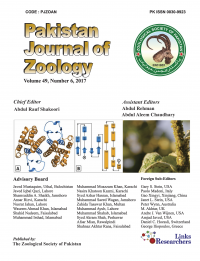Molecular Identification and Pathological Characteristics of NPV Isolated from Spodoptera litura (Fabricius) in Pakistan
Molecular Identification and Pathological Characteristics of NPV Isolated from Spodoptera litura (Fabricius) in Pakistan
Jam Nazeer Ahmad1,2,*, Rashid Mushtaq1, Samina Jam Nazeer Ahmad1,2, Sumaira Maqsood3, Ishita Ahuja4 and Atle M. Bones4
ABSTRACT
To share on other social networks, click on any share button. What are these?










